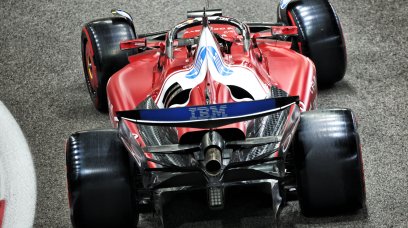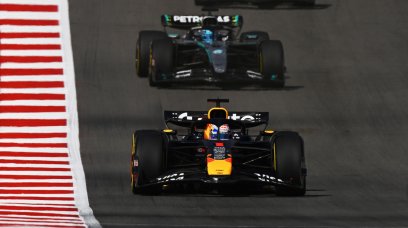With pre-season testing beginning at the Circuit de Barcelona-Catalunya, the on-track action allowed for the first glimpse of some of the innovations the teams have come up with for 2022's new technical regulations. RacingNews365.com explores some of the ideas spotted on the McLaren MCL36 and Ferrari F1-75, with technical writer Paolo Filisetti explaining what might be going on...
How McLaren's MCL36 has used a simple solution for handling hot air
Looking closely at the McLaren MCL36 without its bodywork, it'spossible to appreciate a conventional layout of the radiators and coolers. Nevertheless, the high, albeit narrow, sidepods towards the rear were possible thanks to the fact that the Woking-based team's engineers separated the flows inside the sidepods. In the pictures, it is visible how there is a U-shaped heat protection panel in place surrounding the engine bay, above the engine exhaust. In this way, the hot air exiting from the radiators is channeled rearwards but separated from the heat generated by the engine and, especially, the exhausts. It is, in a way, a simple solution that explains how the sidepod section remains high even if narrow towards the rear end of the car. It is a precise layout that also justifies the adoption of the push-rod system for the rear suspension, putting all the inner elements above the gearbox case to increase the section of the Venturi channels underneath.
Ferrari's F1-75 shows a diligent approach to its development
The F1-75 appears to be a well-designed car, especially with the sinuous design of the top of the sidepods sporting venting gills that extend towards the engine cover. It is a car that looks to be about halfway between the aerodynamic concepts of Red Bull and Mercedes but, apart from that, it seems that many details are less obviously visible compared to these two cars. The volumes of the sidepods look bigger compared to Mercedes and Red Bull and, apparently, there are not any special featuresin terms of suspension elements or packaging. Many details of the car show that there was a subtle aerodynamic study behind every single elementof this car. An interesting feature is the double splitter. Similar to Aston Martin's AMR22's design, it is undoubtedly a feature that underlines the airflow management under the floor. From our sources, it appears that, so far, the floor of the F1-75 looks as being one of the most efficient in terms of downforce produced. This partially explains why this car looked as though it was the one most ferociously hit by 'porpoising'. The stall of the front wing on the F1-75 produces a higher loss of downforce at the level of the leading edge of the floor channels compared to other cars, underlining the huge gap between the load produced by the floor and the one generated by the upper bodywork. In a few words, numbers suggest a loss of 20 per cent of front-end downforce in the triggering first phase of porpoising.
Most read







